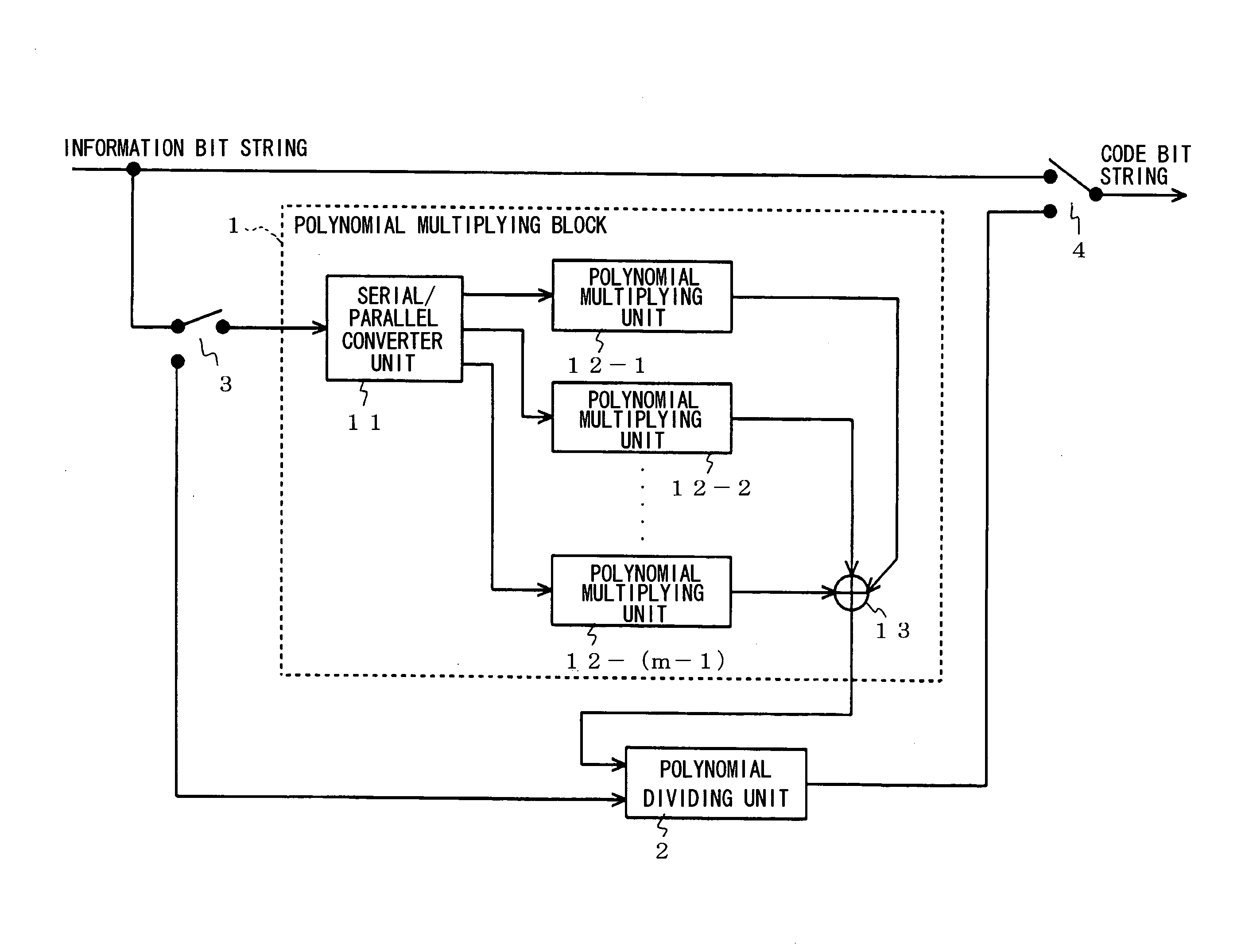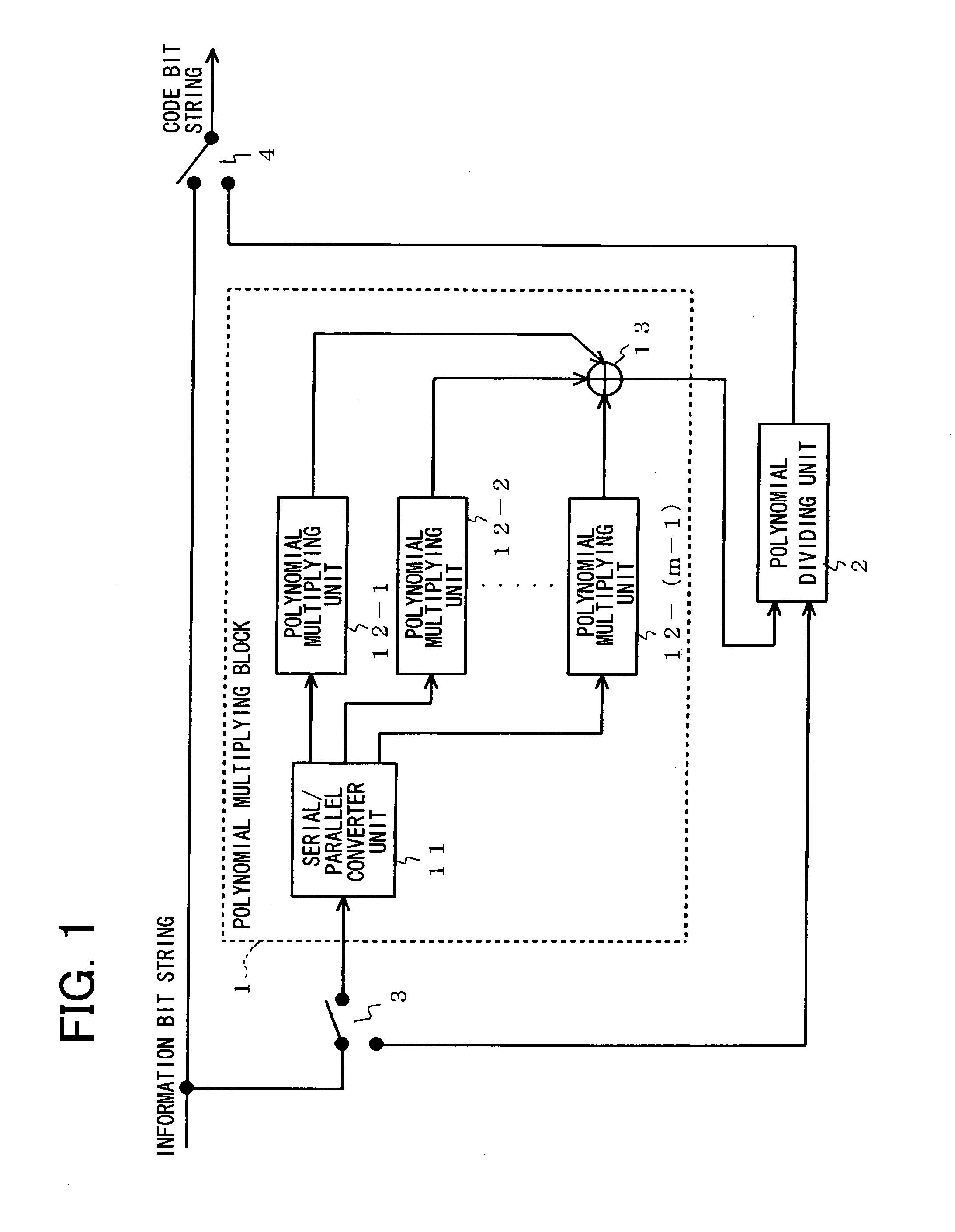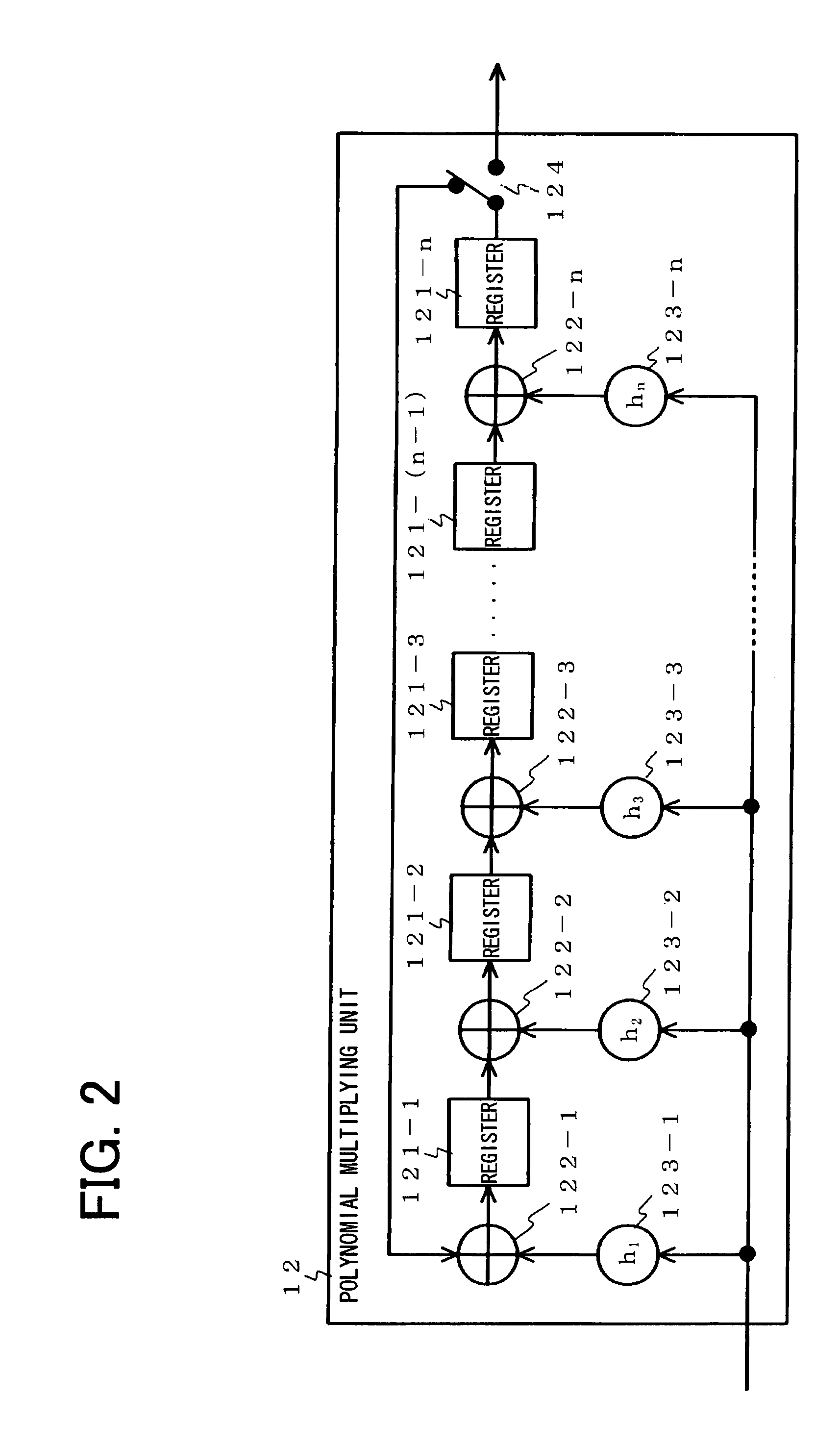Error correction encoding apparatus and error correction encoding method used therein
a technology of error correction encoding and encoding method, which is applied in the direction of coding, code conversion, digital transmission, etc., can solve the problems of difficult to evaluate the performance of error-rate characteristics (the obtained coding gain) in an area with low error probability, and the optimum precision is large, so as to achieve the effect of simple apparatus structur
- Summary
- Abstract
- Description
- Claims
- Application Information
AI Technical Summary
Benefits of technology
Problems solved by technology
Method used
Image
Examples
Embodiment Construction
[0049]Next, examples of the present invention will be described with reference to the drawings. FIG. 1 is a block diagram showing the configuration of an error correction encoding apparatus according to an example of the present invention. In FIG. 1, the error correction encoding apparatus according to an example of the present invention is formed by a polynomial multiplying block 1 comprising a serial / parallel (S / P) converter unit 11, an m−1 number of (n−1)-th-order polynomial multiplying units 12-1 to 12-(m−1), and an adder unit 13, a r-th-order polynomial dividing unit 2, and switches 3 and 4, and is an apparatus that converts an information bit string of (nm-r) bits into a code bit string of nm bits (where m and n represent integers equal to or greater than two and r represents an integer from 1 to n, inclusive).
[0050]As described later, the polynomial multiplying block 1 is configured as shown in FIG. 4, however, in order to simplify the explanation, we will assume that the pol...
PUM
 Login to View More
Login to View More Abstract
Description
Claims
Application Information
 Login to View More
Login to View More - R&D
- Intellectual Property
- Life Sciences
- Materials
- Tech Scout
- Unparalleled Data Quality
- Higher Quality Content
- 60% Fewer Hallucinations
Browse by: Latest US Patents, China's latest patents, Technical Efficacy Thesaurus, Application Domain, Technology Topic, Popular Technical Reports.
© 2025 PatSnap. All rights reserved.Legal|Privacy policy|Modern Slavery Act Transparency Statement|Sitemap|About US| Contact US: help@patsnap.com



